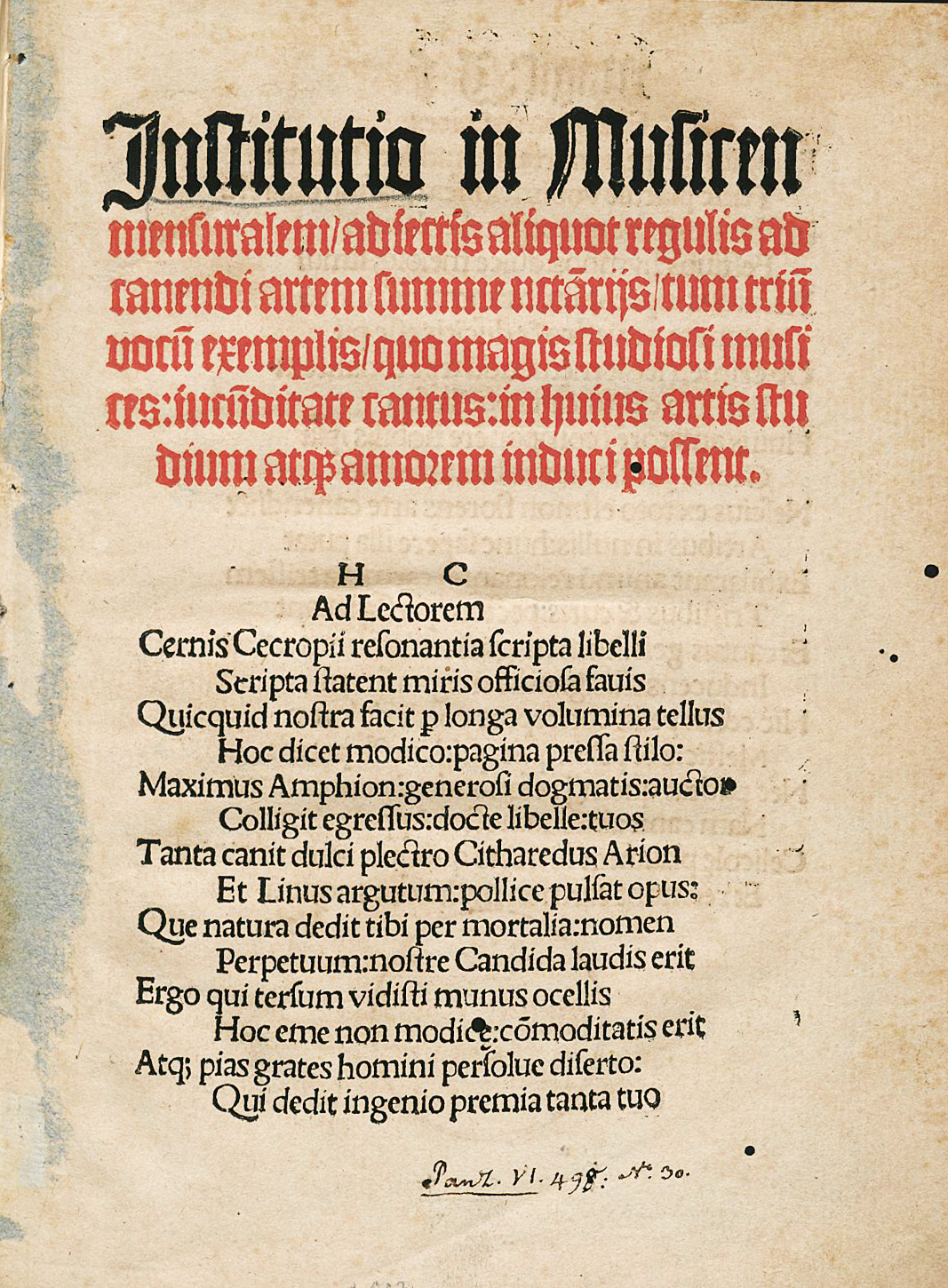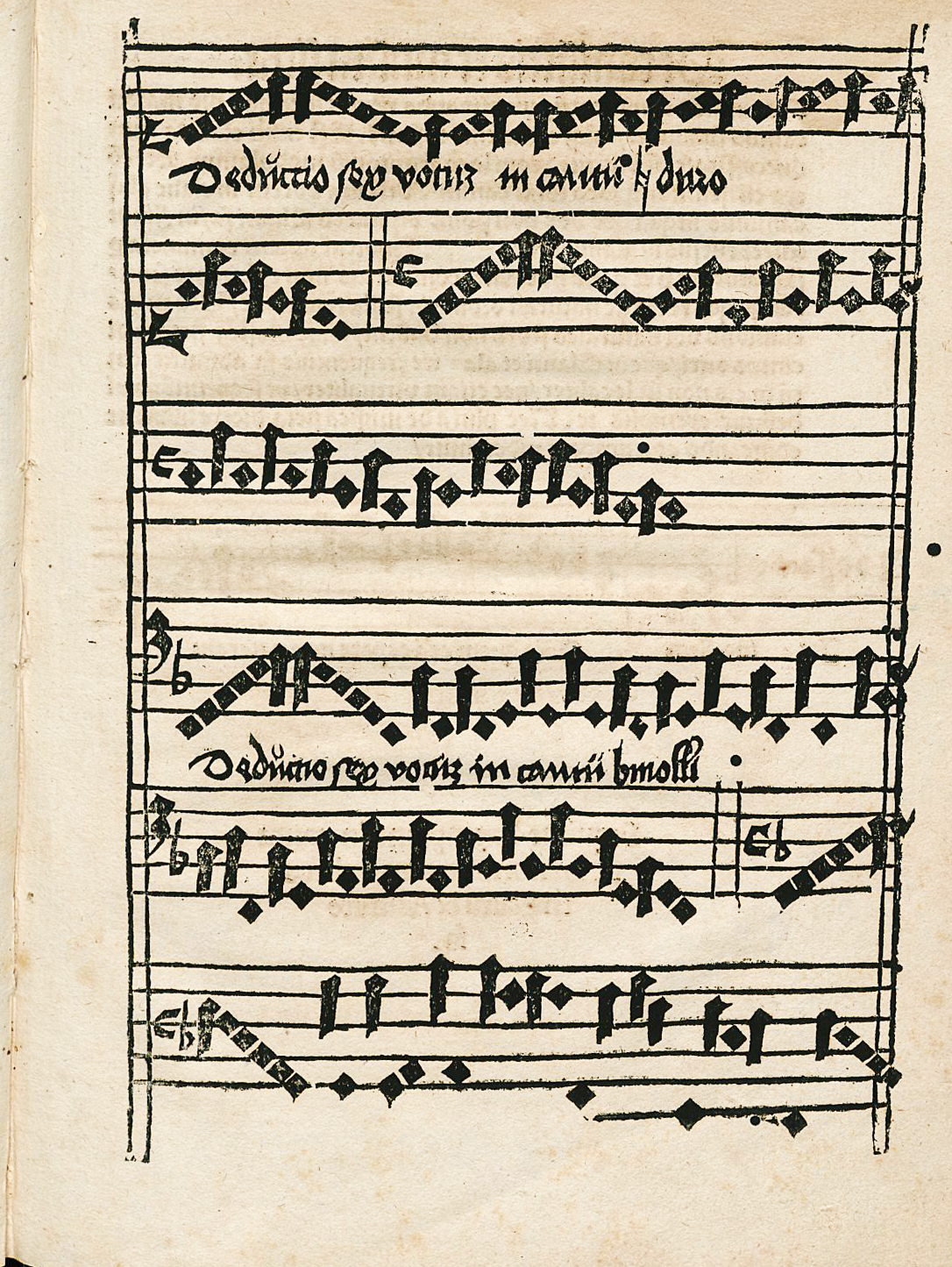Erfurt: Hans Knappe the Elder, 1513, vdm: 737
Institutio in Musicen || mensuralem/ adiectis aliquot regulis ad || canendi artem summe necãrijs/ tum triũ || vocũ exemplis/ quo magis studiosi musi||ces: iucũditate cantus: in huius artis stu||dium atq𝔷 amorem induci possent.|| H.C.|| Ad Lectorem || Cernis Cecropii resonantia scripta libelli || Scripta scatent miris officiosa fauis || Quicquid nostra facit ꝑ longa volumnia tellus || Hoc dicet modico: pagina pressa stilo:|| Maximus Amphion: generosi dogmatis: auctor || Colligit egressus: docte libelle: tuos || Tanta canit dulci plectro Citharedus Arion || Et Linus argutum: pollice pulsat opus:|| Que natura dedit tibi per mortalia: nomen|| Perpetuuum: nostre Candica laudis erit || Ergo qui tersum vidisti munus ocellis || Hoc eme non modice excōmodatis erit || Atq𝔷 pias grates homini persolue diserto:|| Qui dedit ingenio permia tanta tuo.||
Finis musicę mensuralis iam nouiter Erphurdie || excussum per Ioannem Knappum || Anno salutis M.D.xiij. 25.|| Kaleñ. Septembris ||
The initials HK (with the K attached to the right hand of the H) in white lines on black background.
Erfurt
Theory book
A1r: H. C. Ad Lectorem.
A1v: Mais: J. F. Eulogium musices.
A2r: Prefatio in Musicen.
D5v: Ad Lectorem.
D6r: Ad Lectorem.
Latin
D-B Mus. ant. theor. H. 90 (3)
D-B (2)

woodcut
Antiqua (Roman), Textura
red type on title page
The first musical example (A5r) is a full-page woodcut, where all the lines including the text were cut into wood in one block. On other occasions there are single lines of musical examples with the text set underneath from type.(A5v, for example).
The music notes are rather large and crudely cut.
The music for three voices is cut with one voice underneath the other, almost giving an impression of scoring. The woodcut with ligatures (B4r) is particularly messy.
In the woodcut the staff, notes and text are printed together.
Mensural notation; Hufnagel notation
A5r is full page 120 x 175 mm.
example in theory book
Examples for musica ficta, hexachords, clefs, ligatures, punctuation, prolation, alteration.
D-As, *D-B, D-B, D-EFs, D-FRu, D-KA, D-MZs

1. Flores musice omnis cantus Gregoriani, Augsburg, 1488.
2. Opus aureum, Wollick, 1501.
4. Bogentanz Collectanea utriusque, 1515.
Opus aureum musicae [Quentell 1501] (b) - D-B
Numerous annotations in black ink including a system of music with four lines containing chant.
D-B (2)